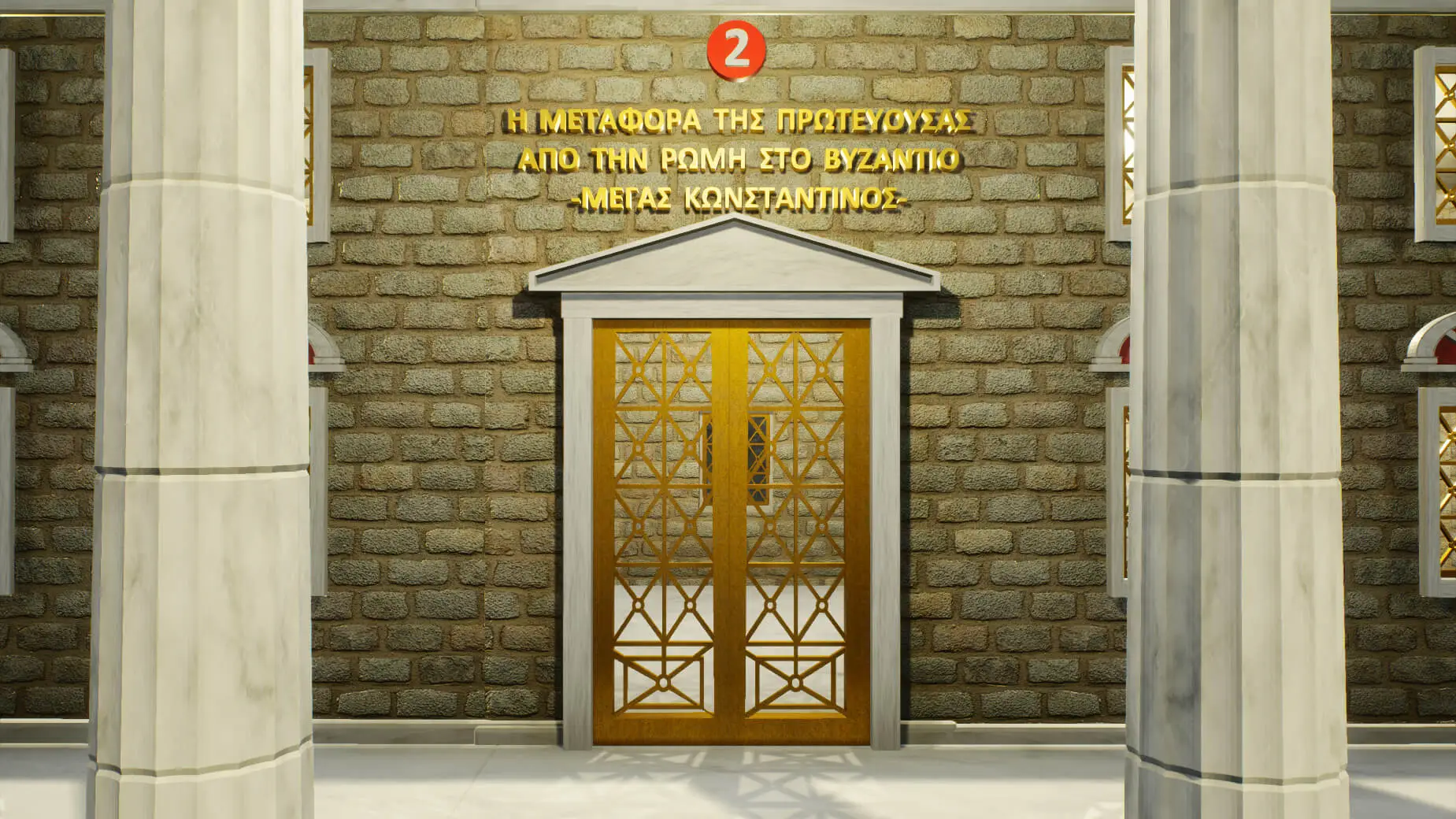
The Transfer Of The Capital Of The Roman Empire From Rome To Byzantium – Constantine The Great
The definition of consistent policy in imperial affairs was the achievement of two great soldier-emperors, Diocletian (ruled 284–305) and Constantine I (sole emperor 324–337), who together ended a century of anarchy and refounded the Roman state. There are many similarities between them, not the least being the range of problems to which they addressed themselves: both had learned from the 3rd-century anarchy that one man alone and unaided could not hope to control the multiform Roman world and protect its frontiers; as soldiers, both considered reform of the army a prime necessity in an age that demanded the utmost mobility in striking power; and both found the old Rome and Italy an unsatisfactory military base for the bulk of the imperial forces.
Deeply influenced by the soldier’s penchant for hierarchy, system, and order, a taste that they shared with many of their contemporaries as well as the emperors who preceded them, they were appalled by the lack of system and the disorder characteristic of the economy and the society in which they lived. Both, in consequence, were eager to refine and regularize certain desperate expedients that had been adopted by their rough military predecessors to conduct the affairs of the Roman state. Whatever their personal religious convictions, both, finally, believed that imperial affairs would not prosper unless the emperor’s subjects worshiped the right gods in the right way.
The means they adopted to achieve those ends differ so profoundly that one, Diocletian, looks to the past and ends the history of Rome; the other, Constantine, looks to the future and founds the history of Byzantium. Thus, in the matter of succession to the imperial office, Diocletian adopted precedents he could have found in the practices of the 2nd century ce. He associated with himself a coemperor, or Augustus. Each Augustus then adopted a young colleague, or Caesar, to share in the rule and eventually to succeed the senior partner. That rule of four, or tetrarchy, failed of its purpose, and Constantine replaced it with the dynastic principle of hereditary succession, a procedure generally followed in subsequent centuries.
To divide administrative responsibilities, Constantine replaced the single praetorian prefect, who had traditionally exercised both military and civil functions in close proximity to the emperor, with regional prefects established in the provinces and enjoying civil authority alone. In the course of the 4th century, four great “regional prefectures” emerged from those Constantinian beginnings, and the practice of separating civil from military authority persisted until the 7th century.
Contrasts in other areas of imperial policy are equally striking. Diocletian persecuted Christians and sought to revive the ancestral religion. Constantine, a convert to the new faith, raised it to the status of a “permitted religion.”
Diocletian established his headquarters at Nicomedia, a city that never rose above the status of a provincial centre during the Middle Ages, whereas Constantinople, the city of Constantine’s foundation, flourished mightily. Diocletian sought to bring order into the economy by controlling wages and prices and by initiating a currency reform based upon a new gold piece, the aureus, struck at the rate of 60 to the pound of gold. The controls failed and the aureus vanished, to be succeeded by Constantine’s gold solidus.
The latter piece, struck at the lighter weight of 72 to the gold pound, remained the standard for centuries. For whatever reason, in summary, Constantine’s policies proved extraordinarily fruitful. Some of them—notably hereditary succession, the recognition of Christianity, the currency reform, and the foundation of the capital—determined in a lasting way the several aspects of Byzantine civilization with which they are associated.

Yet it would be a mistake to consider Constantine a revolutionary or to overlook those areas in which, rather than innovating, he followed precedent. Earlier emperors had sought to constrain groups of men to perform certain tasks that were deemed vital to the survival of the state but that proved unremunerative or repellent to those forced to assume the burden.
Such tasks included the tillage of the soil, which was the work of the peasant, or colonus; the transport of cheap bulky goods to the metropolitan centres of Rome or Constantinople, which was the work of the shipmaster, or navicularius; and services rendered by the curiales, members of the municipal senate charged with the assessment and collection of local taxes.
Constantine’s laws in many instances extended or even rendered hereditary those enforced responsibilities, thus laying the foundations for the system of collegia, or hereditary state guilds, that was to be so noteworthy a feature of late-Roman social life. Of particular importance, he required the colonus (peasant) to remain in the locality to which the tax lists ascribed him.
The 5th century: Persistence of Greco-Roman civilization in the East
Whether innovative or traditional, Constantine’s measures determined the thrust and direction of imperial policy throughout the 4th century and into the 5th. The state of the empire in 395 may, in fact, be described in terms of the outcome of Constantine’s work. The dynastic principle was established so firmly that the emperor who died in that year, Theodosius I, could bequeath the imperial office jointly to his sons, both of whom were young and incompetent: Arcadius in the East and Honorius in the West.
Never again would one man rule over the full extent of the empire in both its halves. Constantinople had probably grown to a population of between 200,000 and 500,000; in the 5th century the emperors sought to restrain rather than promote its growth. After 391 Christianity was far more than one among many religions: from that year onward, imperial decree prohibited all forms of pagan cult, and the temples were closed. Imperial pressure was often manifest at the church councils of the 4th century, with the emperor assuming a role he was destined to fill again during the 5th century in defining and suppressing heresy.

